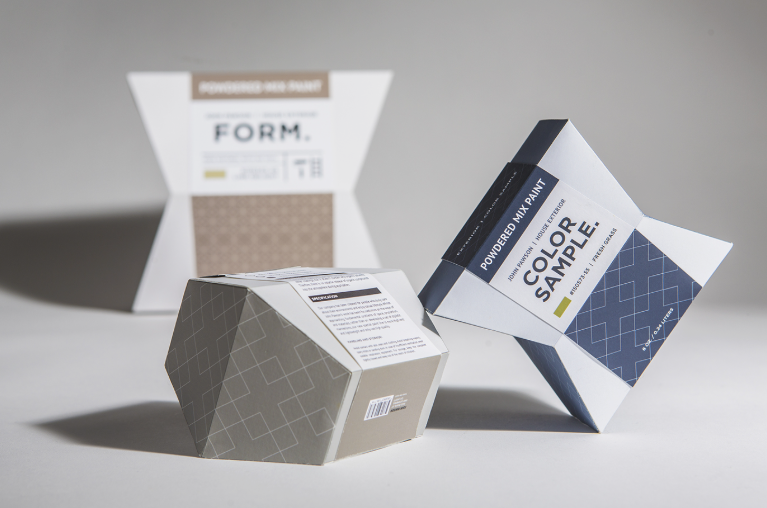Packaging design is far more than just a visual statement for your product—it’s an essential part of your brand identity, customer experience, and sales strategy. Whether you’re launching a new product, revamping an old one, or diving into the world of e-commerce, the importance of good packaging design cannot be overstated. But what goes into packaging design services, and how does a packaging design maker ensure your vision is realized?
In this blog, we’ll take you behind the scenes of a packaging design service, walking you through the process step by step, so you can understand how packaging design can transform your business and set your products apart in a crowded marketplace.
The Power of Packaging Design
Before diving into the process, let’s first acknowledge why packaging design is so crucial. Your product packaging serves multiple functions. It’s a protective layer, a marketing tool, and an integral part of your branding strategy. Packaging design can create the first impression of your product, influence consumer behavior, and differentiate your brand in a competitive market.
From the colors and typography to the shape and material used, every element of the packaging plays a role in communicating the essence of your product. In fact, research shows that consumers often make purchase decisions based on packaging alone. Therefore, investing in a well-thought-out packaging design can make all the difference.
Step 1: Understanding the Brand and Product
The first step in the packaging design process is to get to know the product and brand inside and out. A packaging design maker begins by meeting with the client to understand their business goals, target audience, and the specific needs of the product being packaged.
During this phase, the designer will ask critical questions like:
- Who is the target customer?
- What are the unique selling points (USPs) of the product?
- What is the personality of the brand—fun, luxurious, eco-friendly, etc.?
- How does the product fit into the current market landscape?
This stage is vital because the packaging design needs to resonate with the target audience and align with the overall branding strategy.
Step 2: Concept Development and Ideation
Once the designer understands the product and brand, the ideation phase begins. This step involves brainstorming ideas, sketching initial concepts, and gathering inspiration. The designer may look at other successful packaging designs, competitors, and current design trends for inspiration.
The key here is to ensure the packaging is functional, aesthetically pleasing, and aligned with the brand. Depending on the product, the designer may explore various forms of packaging, such as boxes, bottles, bags, or pouches. Each form will come with its own set of design challenges and opportunities.
During this stage, the designer will focus on:
- Color scheme
- Typography and logo placement
- Imagery and graphics
- Materials and texture
- Shape and dimensions
The goal is to create several preliminary designs that can be refined and tested later in the process.
Step 3: Prototyping and Materials Selection
After finalizing a few design concepts, it’s time to move on to prototyping. At this stage, the packaging design services team will create a physical or digital prototype of the packaging to test how the design works in real life.
Prototyping serves multiple purposes:
- Ensuring the design is functional and practical.
- Evaluating the durability of the materials chosen.
- Fine-tuning the look and feel of the packaging.
The designer will test different materials to see how they affect the overall look of the packaging and the cost-effectiveness of the product. For example, sustainable packaging options like recycled paper or biodegradable plastics might be considered for brands that emphasize eco-friendliness.
Materials selection is critical because it impacts both the visual appeal of the design and the cost of production. The packaging must protect the product effectively, especially for fragile or sensitive items, and ensure it remains intact during shipping and handling.
Step 4: Refining the Design
Once the prototype is complete, the next step is refining the design. The packaging design maker will review the prototype and address any potential issues. This may involve revising the design to ensure it aligns with the brand’s goals and addresses practical concerns like ease of use or cost-effectiveness.
At this stage, the designer may make adjustments to:
- Graphics, colors, and typography to improve visibility.
- Material choices based on production cost or sustainability.
- The overall structure to improve usability or shelf appeal.
Client feedback is integral to this step. Many packaging design services work closely with clients to make sure the final design meets their expectations and is aligned with the product’s identity.
Step 5: Finalization and Production
After the design is polished and refined, the final version is prepared for production. This is where the packaging design service collaborates with printers, manufacturers, and suppliers to bring the design to life.
During the finalization phase, the designer will:
- Finalize the artwork files.
- Ensure proper formatting for printing (color codes, dimensions, dielines).
- Work with manufacturers to confirm that the packaging is cost-effective and meets quality standards.
This step involves coordinating all the technical aspects, such as printing processes and materials, to ensure that the packaging is produced efficiently and consistently.
Step 6: Quality Control and Shipping
Once the packaging is produced, quality control checks are performed to ensure that the packaging meets the design specifications and quality standards. This includes verifying color accuracy, print clarity, and material consistency.
Packaging design services often work closely with manufacturers during this phase to ensure everything is in perfect condition before shipping. After passing quality control, the packaging is ready to be shipped to the client, and the product can be packed and distributed to customers.
Step 7: Launch and Evaluation
After the packaging is launched, it’s time to assess its success. Packaging design services often offer post-launch evaluation, which may involve:
- Customer feedback on the packaging’s functionality and appeal.
- Monitoring sales and performance to see if the packaging contributes to increased sales or brand recognition.
- Adjustments to the design or materials based on customer response or logistical feedback.
This final evaluation phase ensures that the packaging is performing as intended and provides valuable insights for future design projects.
Conclusion
The process of creating exceptional packaging is a complex journey that requires attention to detail, creativity, and strategy. A packaging design maker will guide you through each phase, from initial consultation to final production, ensuring that your packaging aligns with your brand, appeals to your target audience, and helps your product stand out on the shelves.
Whether you are launching a new product or looking to revamp your current packaging, working with professional packaging design services can make a world of difference. Great packaging does more than protect your product—it enhances the customer experience and reinforces your brand’s message.
FAQs
1. What factors should I consider when choosing packaging design services?
When selecting packaging design services, consider the company’s experience, portfolio, and familiarity with your product type and industry. Also, check their ability to handle materials, printing, and production logistics. Customer reviews and communication throughout the process are key to a successful collaboration.
2. How much does packaging design cost?
The cost of packaging design can vary greatly depending on factors such as complexity, the number of design revisions, materials, and production volume. Typically, you can expect to pay anywhere from a few hundred to several thousand dollars for professional packaging design services.
3. Can packaging design impact my product’s sales?
Absolutely! Packaging design plays a significant role in consumer decision-making. Attractive, functional packaging can grab attention, convey your brand message, and create a positive first impression, all of which can lead to higher sales and increased brand loyalty.
4o mini
O


